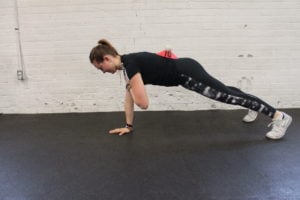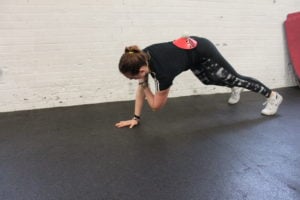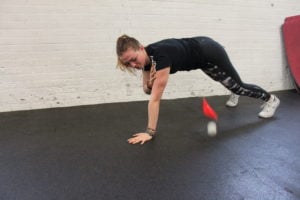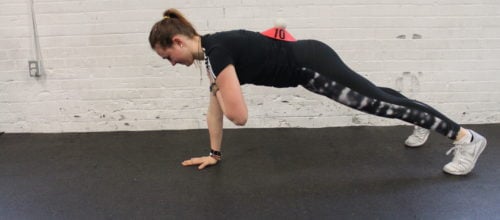
Welcome back folks. In the first installment I spoke to you about the importance of stability in your hips and core. You were presented with 3 exercises as seen below. Today we’ll continue to discuss the topic while covering Shoulder Taps.
- Prone Kneeling Hip Extension
- Shoulder Taps
- Bear Crawls
In part one you learnt about the Prone Kneeling Hip Extension and the Bird Dog. For those who missed it or for a quick recap check out the link below.
https://primalgym.ca/3-exercises-to-help-improve-stability/
A QUICK REMINDER
It’s important that you don’t immediately think of only your abdominal muscles when you hear the word core in a fitness setting. Yes they are a part of the equation but if you are targeting the core, it likely means a whole lot more than working on your six pack.
SHOULDER TAPS
Today you’ll read about Shoulder Taps! Similarly to the Kneeling Hip Extension, Shoulder Taps are a very simple, subtle exercise that are unfortunately not always given the attention or patience they deserve. This exercise will compliment your program/routine whether it’s used during the warm up, in between exercises or as part of a finisher. The key thing to remember is you are working at maintaining stable hips and a neutral spine. While performing shoulder taps you are resisting all sorts of forces on the body. You don’t want to have your hips too low or too high and you want to make sure you’re resisting any rotational forces by not twisting. Since you’re in a push up position and alternating arms you’ll also get a good amount of shoulder stability out of these. Sounds easy, right? We’ll see. Personally I like to use these as a warm up/activation drill to get a better sense of stabilizing myself before lifting anything.
THE HOW TO
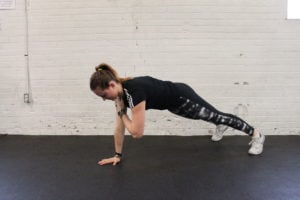
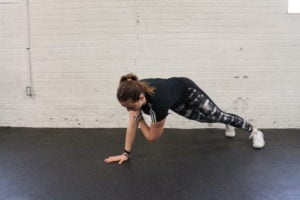
A. Good alignment – Aim for this B. Twisting torso, back arching – Avoid this
Start in a narrow push up position, wrists under the shoulders if not even more narrow. Your feet will be anywhere from hip to shoulder width. This will depend on how much of a base of support you’ll need. If Shoulder taps are new to you then I suggest starting out with your feet wide. From there, ensure that you have a neutral spine and hips square to the ground. You should have your glutes and abdominals engaged and head looking down to continue that neutral spine. Next, hold that position while you slowly remove one hand from the ground and tap the opposite shoulder. Repeat on the other side. As you get more comfortable play around with bringing your feet closer together, holding the tap for a few seconds or even placing some additional weight on yourself. If are unsure if you are in the right position grab a trusty dowel or, in this case, a ball and cone to place on your back. If you can’t keep them stable then you’ve got some adjustments to make.
A. Cone and ball are in place and stable – Thumbs up
B. Hips rising, cone slipping – Thumbs down
C. Goodbye ball – Thumbs way down
UNTIL NEXT TIME
Give Shoulder Taps a try next time you’re in the gym or even at home stretching. Coming up in the final installment of the series you’ll be learning about Bear Crawls. I would be lying if I said they weren’t my favorite exercise of all time. Until then, take care.
One Final Thought: So far you’ve been reading the term hip and core stability. You may have also heard the term spinal stability. Are they the same thing? For the most part, yes. We’re only skimming the surface here so I highly encourage you to do more research on the importance of stability in general. Everyone is different and has their own, unique postural limitations and instability issues.

